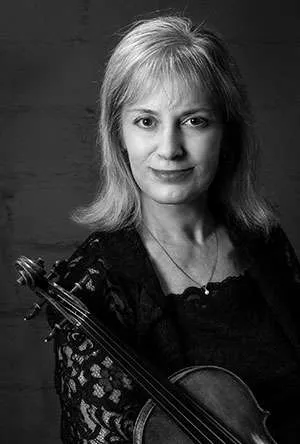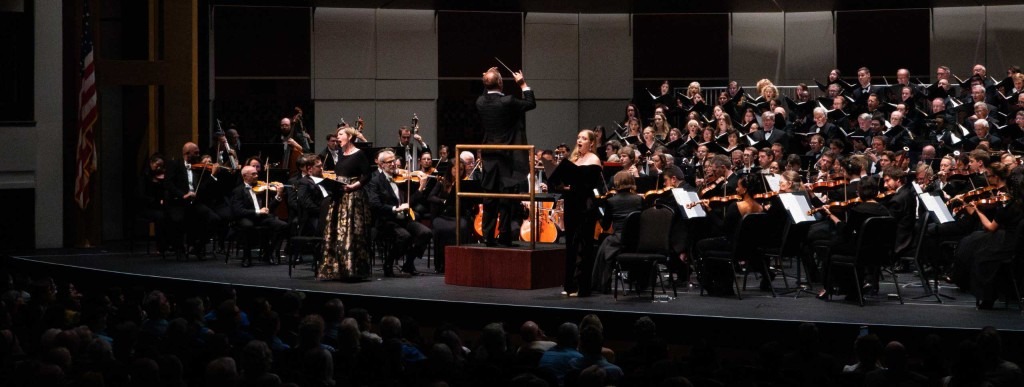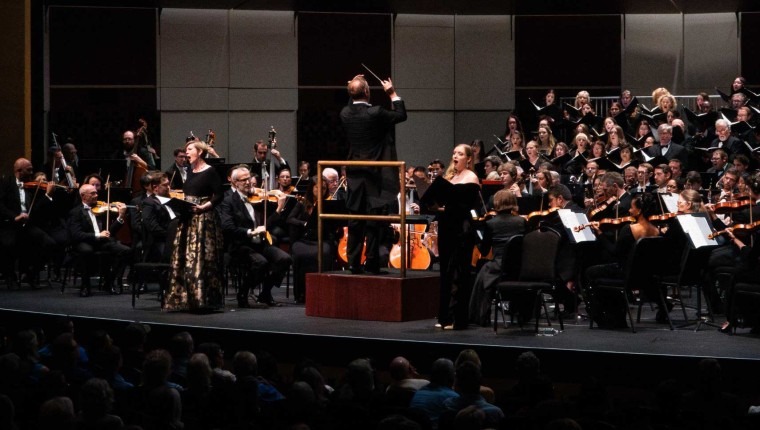. . .
Many music lovers, myself included, have been afflicted by an incurable condition known as Mahleria, contracted from listening to the symphonies of Gustav Mahler. The symptoms are pronounced – euphoria, occasional despair, and physical and mental exhaustion.
The most acute cases, according to musical and medical experts, occur following a performance of the Symphony No. 2, known as the Resurrection, which The Florida Orchestra presented last weekend as a stirring coda to its 2023-24 season.
Expectations for this final program rumbled through our minds all year, and the result will echo into the summer.
An epic orchestral essay, the symphony gasps and growls for more than 80 minutes – among the longest in the repertoire – fed by a battery of 220 musicians. The stage at St. Petersburg’s Mahaffey Theater on Saturday seemed as if it might collapse under all this weight, but Music Director Michael Francis, his players, two vocal soloists and the Master Chorale of Tampa Bay delivered their message with enough precision and clarity to sound like a chamber ensemble on steroids.
The C-Minor Symphony follows a narrative from death to life, opening with a funeral sacrament and ending in the bliss of heavenly ascension. The orchestra was in full bloom with eight flutes and oboes; eight clarinets and bassoons; 18 horns, trumpets and trombones; two sets of timpani; a pair of harps; an array of pitched and unpitched percussion gadgets; and a full complement of strings. Some musicians played offstage, heard but not seen. Saturday, all these forces whispered in lyrical passages one moment, exploding in fury the next.
“It takes us from this dark beginning and through an astonishing journey of life all the way up to the celestial plane,’’ Francis told me. “It’s probably the most impressive piece of music you can hear in concert, and the most glorious climax ever written.’’
Many people heard the Resurrection for the first time in the movie Maestro, the 2023 biopic on Leonard Bernstein, as portrayed by Bradley Cooper. Bernstein helped spawn the Mahler revival in the 1960s, and it should be noted that in 1971 he chose to conduct the work for his 1,000th concert with the New York Philharmonic.
The symphony stands as a series of incomparable instrumental essays that lead to an enormous vocal coda − much like Beethoven’s Ninth Symphony − operatic in dimension and so demanding as to test the limits of everyone, including the conductor.
After the chaos of the opening Totenfeire, the second, third and fourth movements serve as intermezzos, pushing us inexorably toward the 30-minute finale – a colossal musical fresco of the Day of Judgment as the dead rise in unending procession and an overwhelming love shines over the Earth. Soprano Erica Petrocelli and mezzo Susan Platts added warm timbres to the whole with their refined, impassioned solos.
As always, the Master Chorale was in stout form, having been well rehearsed by artistic director Matthew Abernathy over the last few weeks.
“The chorus here really represents the human spirit and its unbelievable ability to transcend to things greater than oneself,’’ he said. “With 120 singers, two soloists and a huge orchestra, you can’t help but be awestruck.”
The program opened with one of the orchestra’s “mystery’’ pieces − music not announced beforehand − the final scene from Francis Poulenc’s Dialogues of the Carmelites. Set during the French Revolution, the opera follows a group on nuns who choose death over renouncing their faith, and this poignant scene depicts their execution, one by one, as they sing the Salva Regina.
The depiction of the grisly demise of holy women presents a challenge to a stage or music director, and most any version of Carmelites is unique – some are beheaded while others burned or shot. In TFO’s tactful, symbolic approach, a muffled bass drum “guillotine” sounded across a darkened stage as each nun extinguished her candle and slumped back in her chair in martyrdom, the music cloaked in a solemn crescendo.
This shocking portrayal had the audience buzzing − an extraordinary scene that underscores the power of art.
This past weekend capped a season full of impressive moments. Performances that stand out include Christopher Theofanidis’ Drum Circles, Brahms’ First Symphony, Valentin Silvestrov’s Prayer for Ukraine, Barber’s Violin Concerto, Stravinsky’s Ebony Concerto, Beethoven’s Eroica and Fauré’s Requiem. Although the orchestra offered dozens of warhorses throughout the year, their vitality made even the most trodden pieces sound fresh.
“You have to experience this kind of music live,’’ Francis says. “You have to be here, and to feel what a uniquely human art this is. It’s about being in the moment. This is what we do as musicians.’’
Final bow for Toula

This was the last TFO concert for violinist Toula Mahalas Bonié, who is retiring after 46 years. She joined the orchestra in 1978, when it was known as the Florida Gulf Coast Symphony, under the direction of the late Irwin Hoffman.
Bonié appeared onstage to accept a plaque signed by all the musicians and acknowledged a long applause before taking her place at the front of the string section. It took all she had to keep from crying, she told me.
“I can truly say I lived the dream,’’ she said. “It was an amazing experience to have the audience clap so long – and I’m glad I didn’t speak because I was speechless.’’
Originally published in the Florida Orchestra Blog




